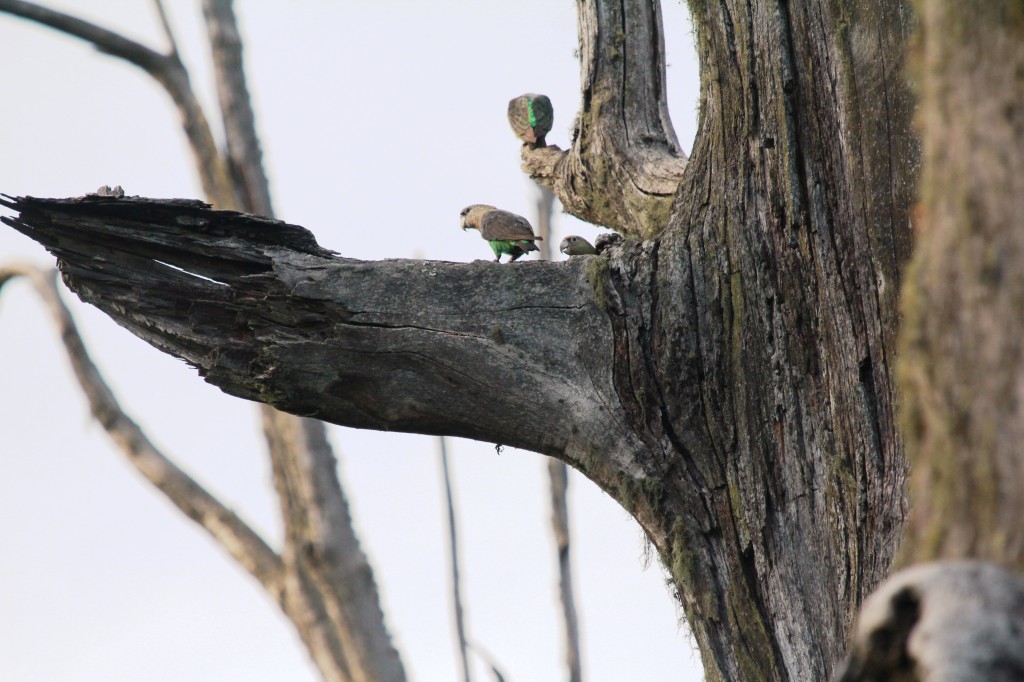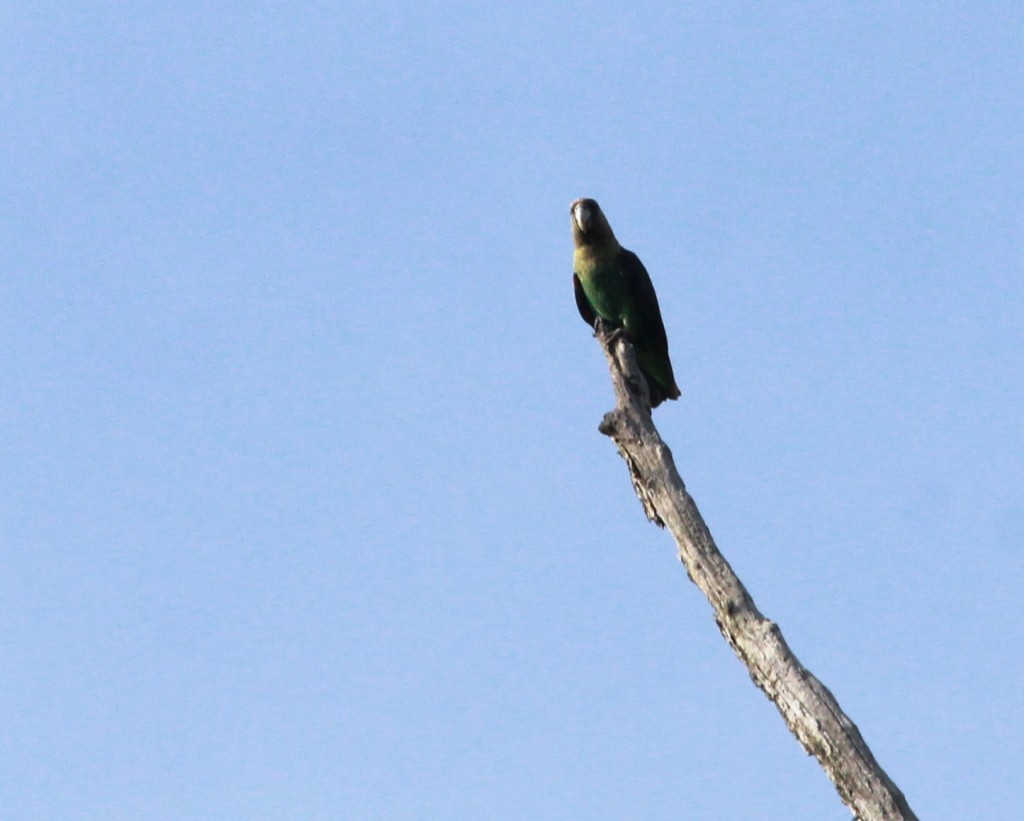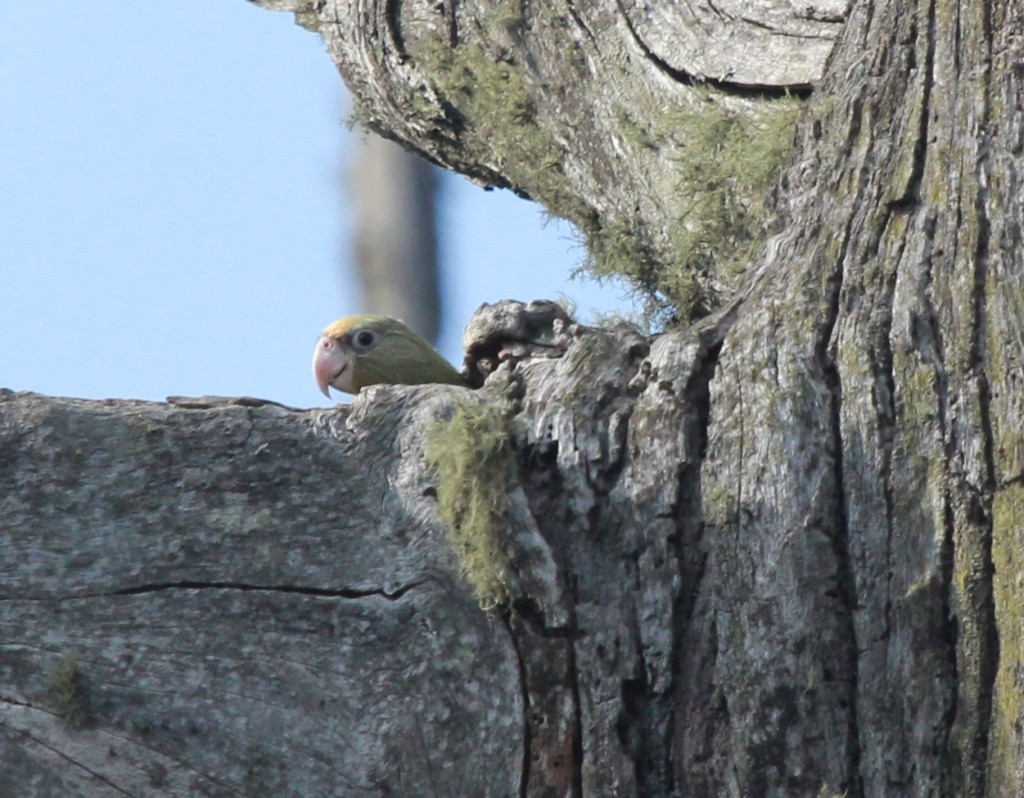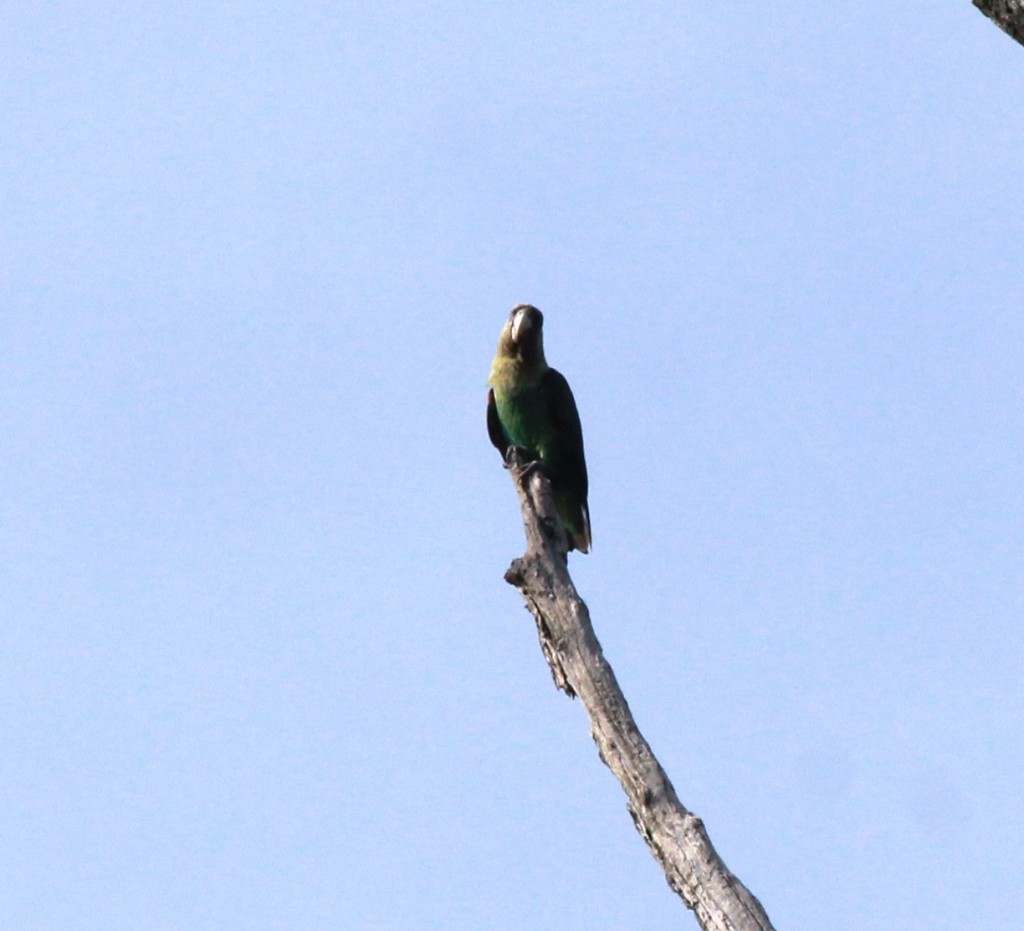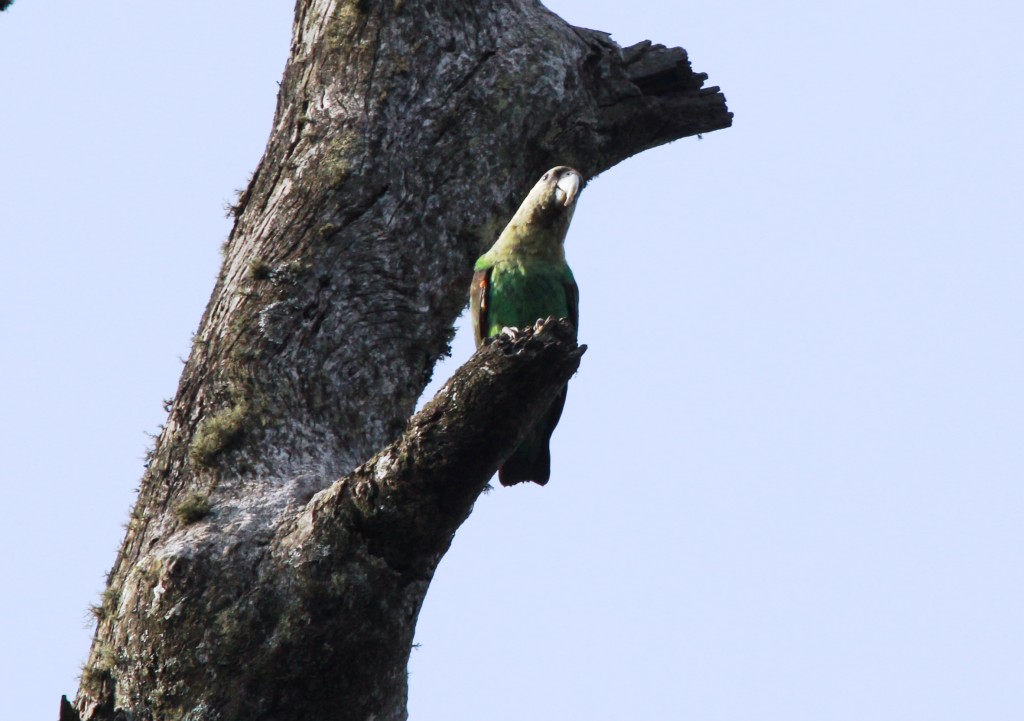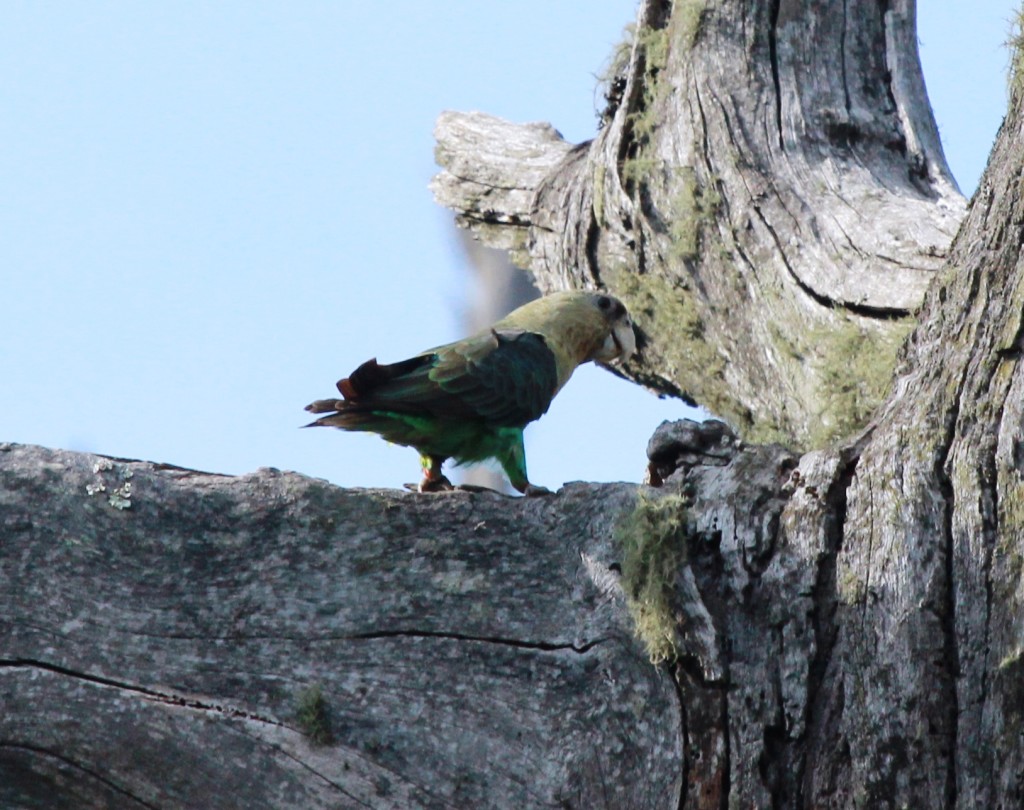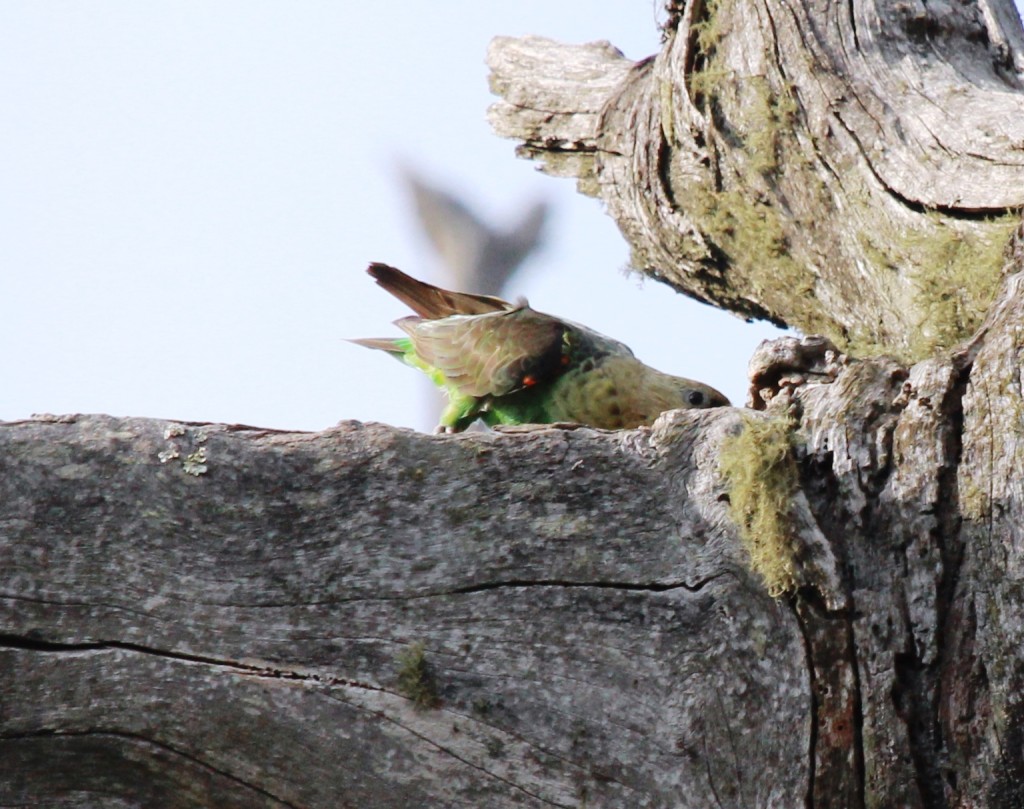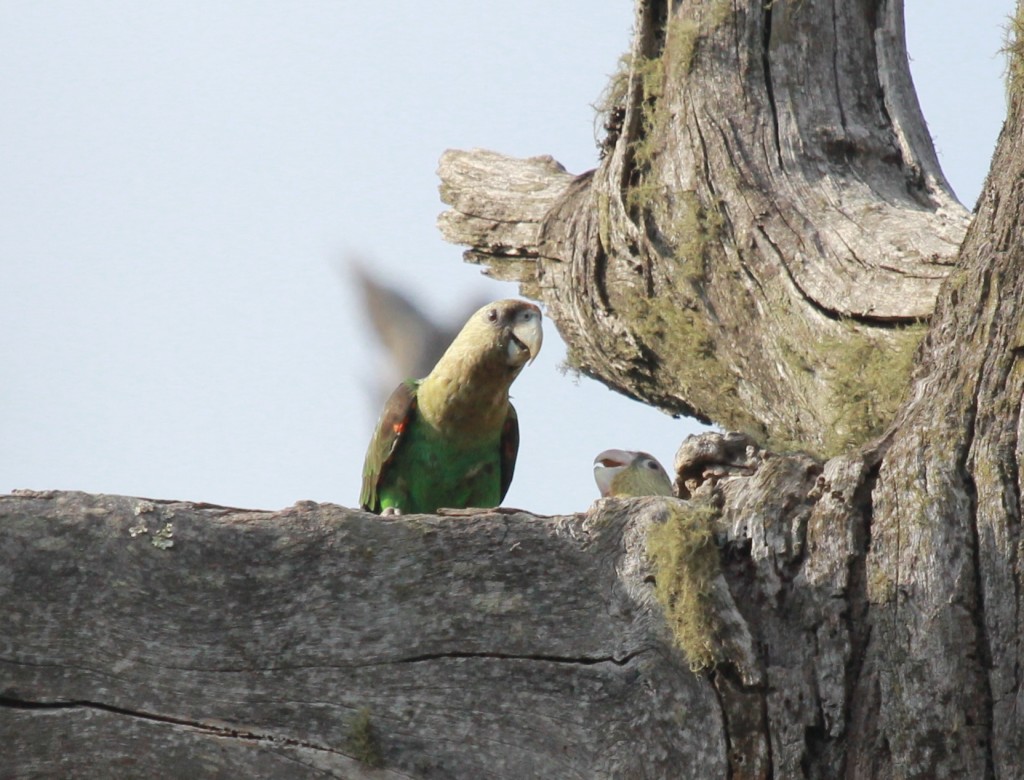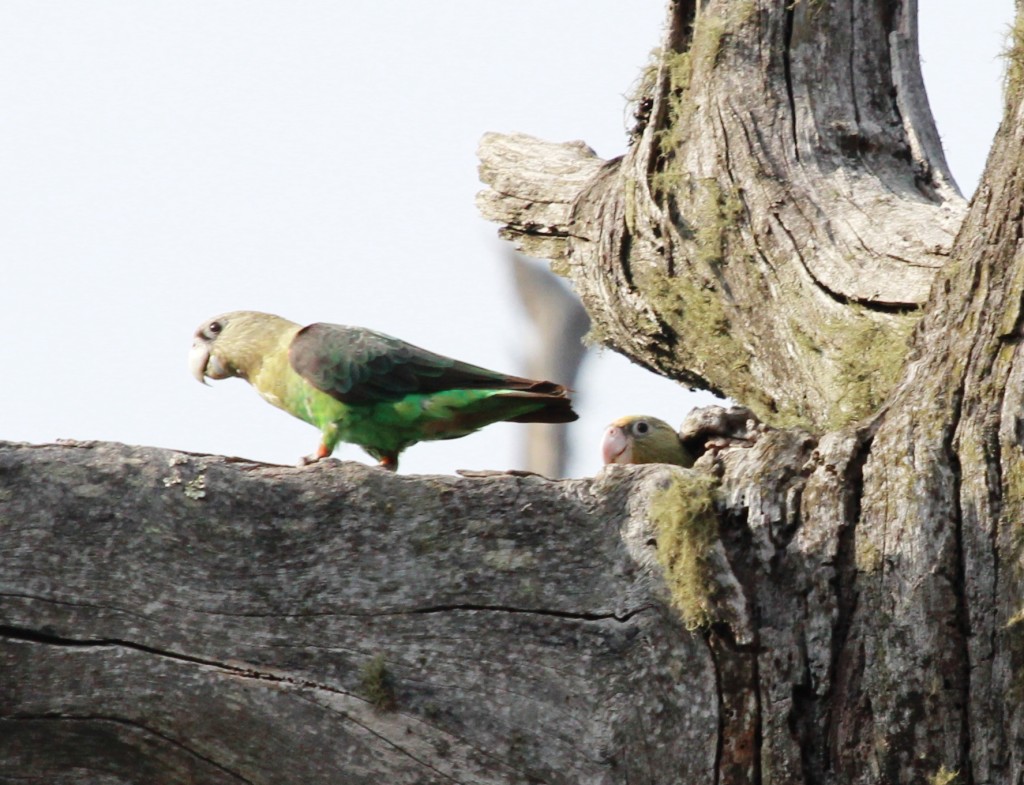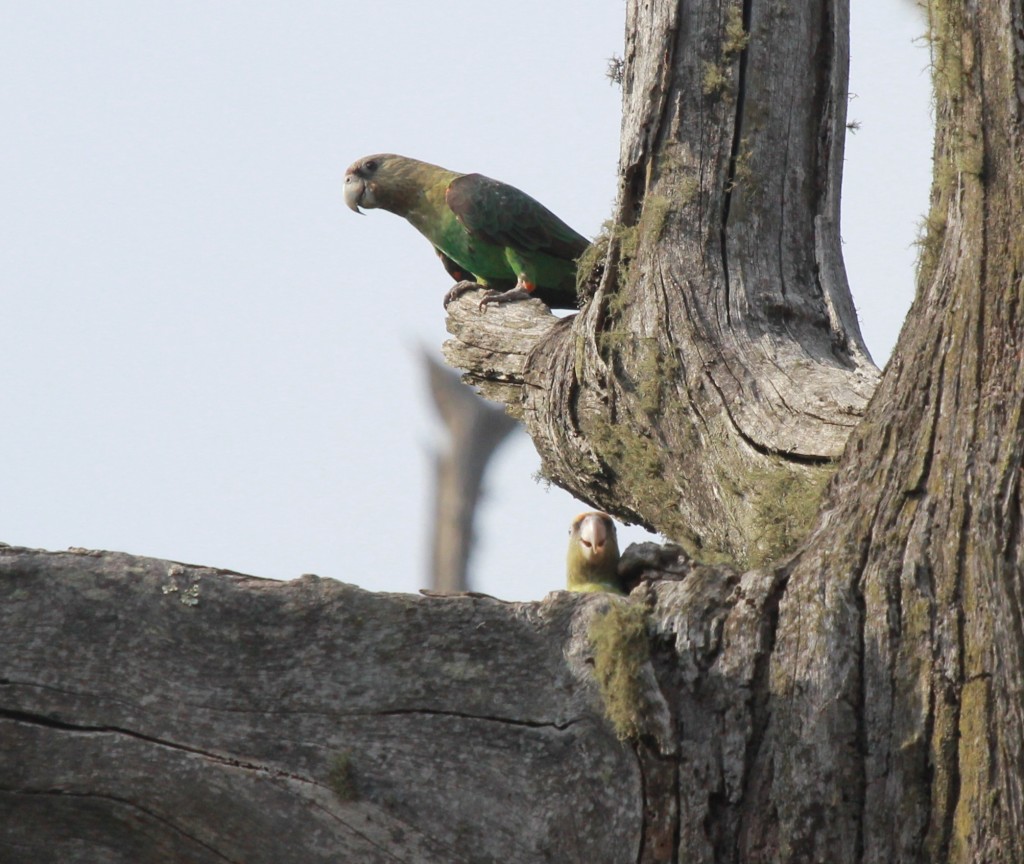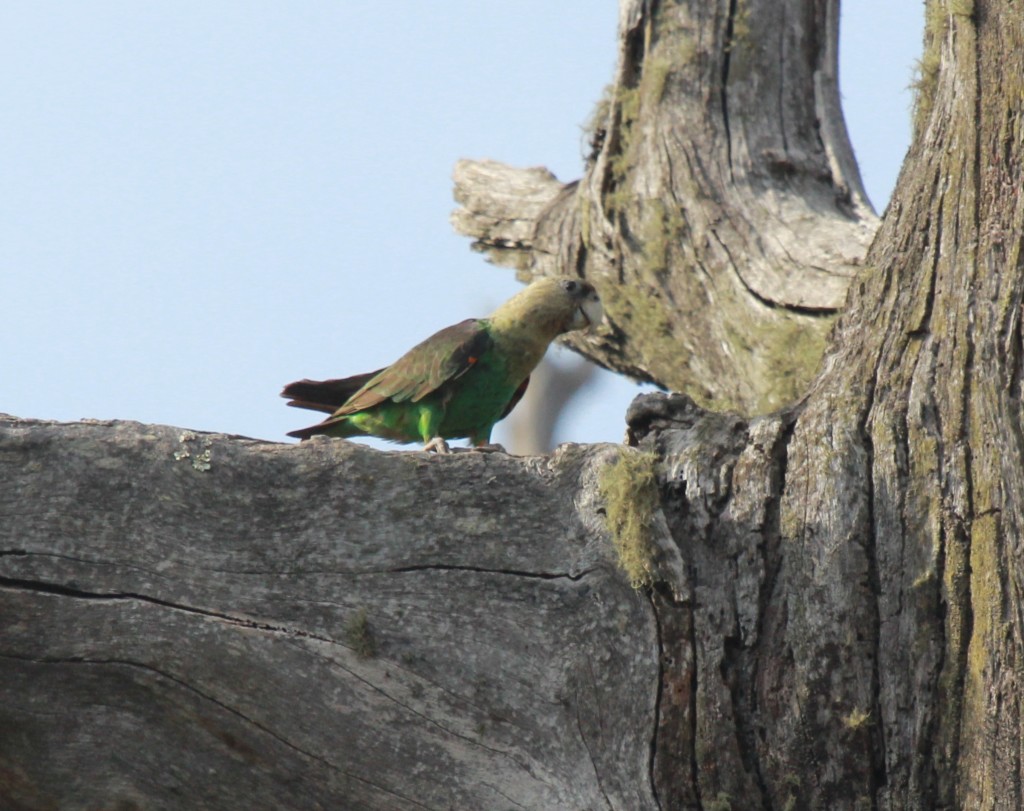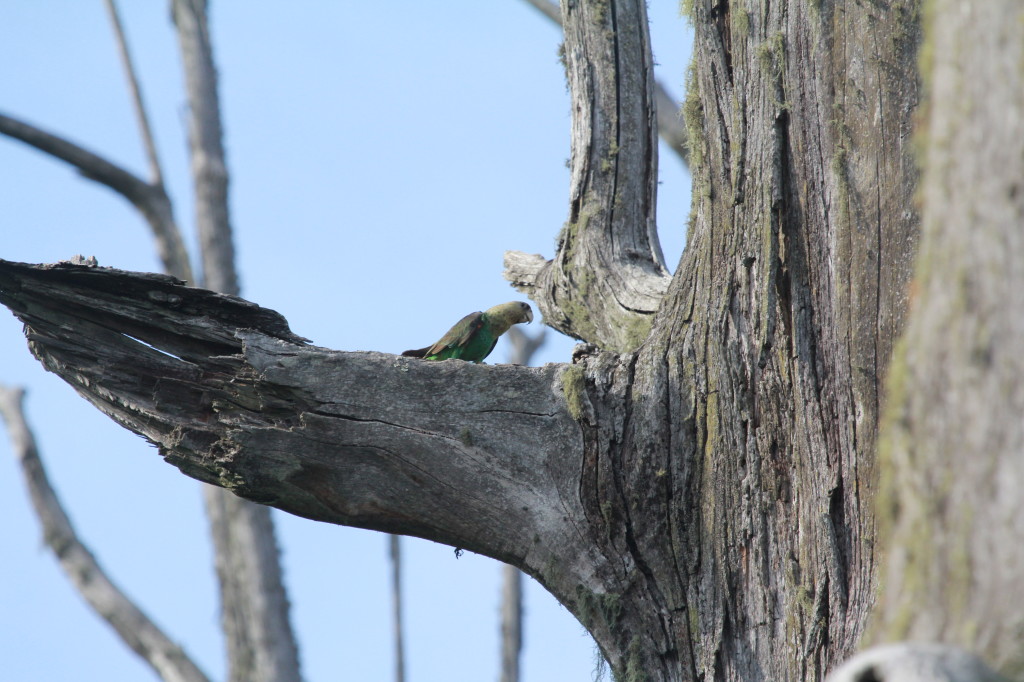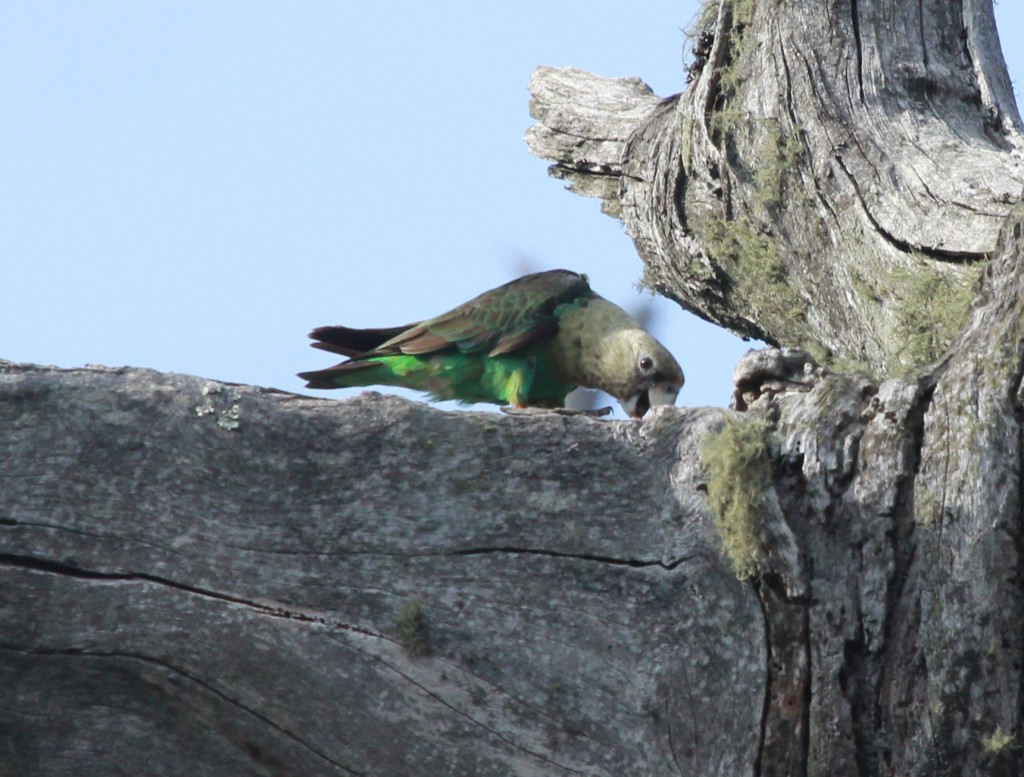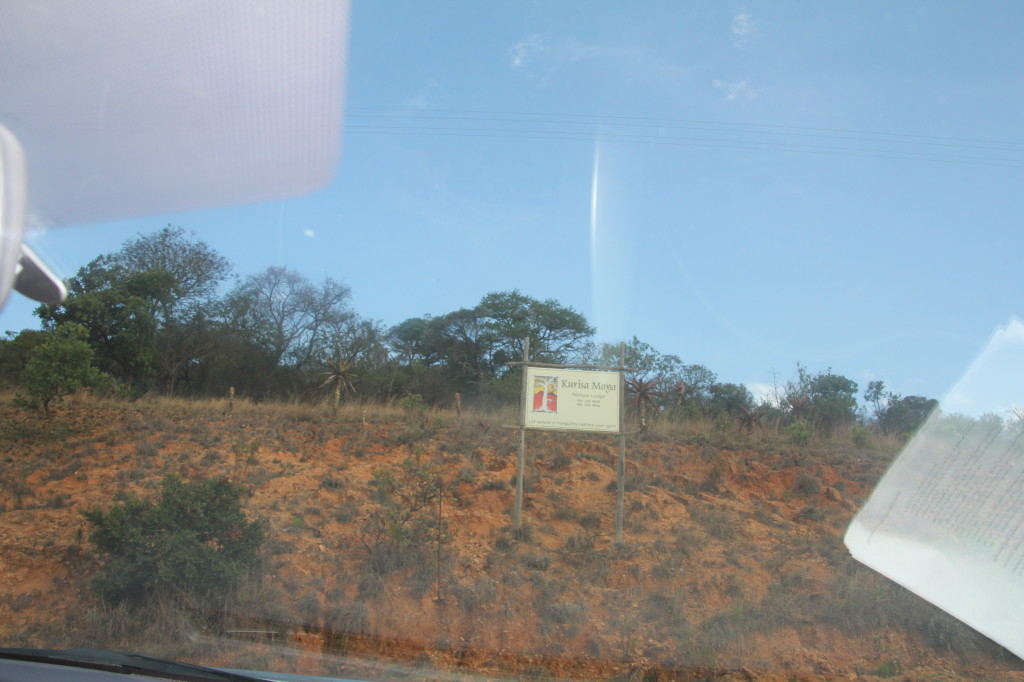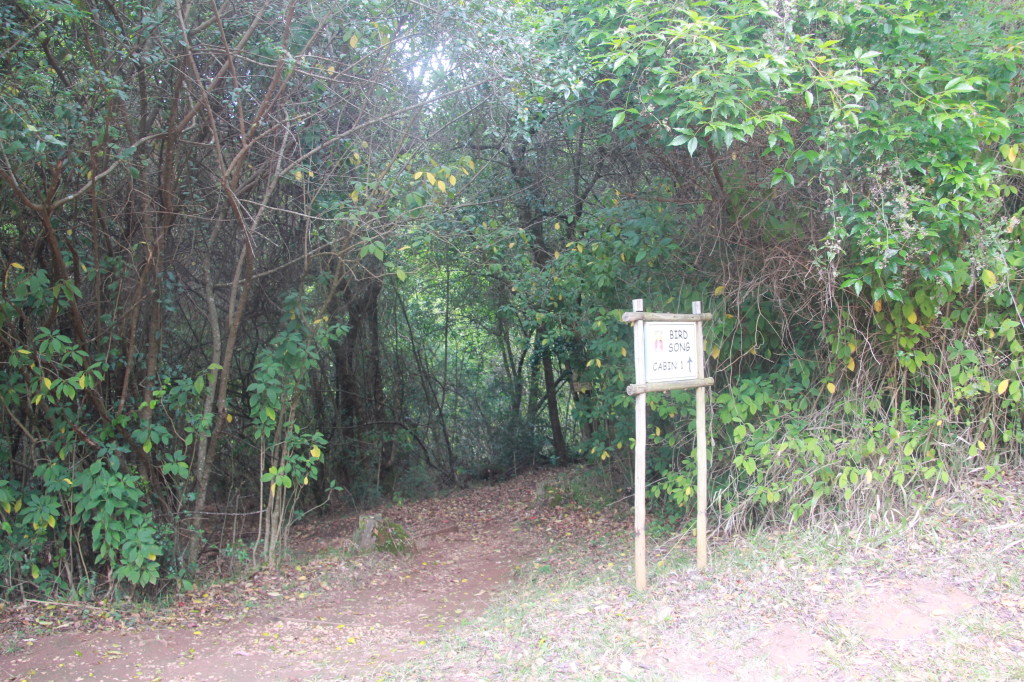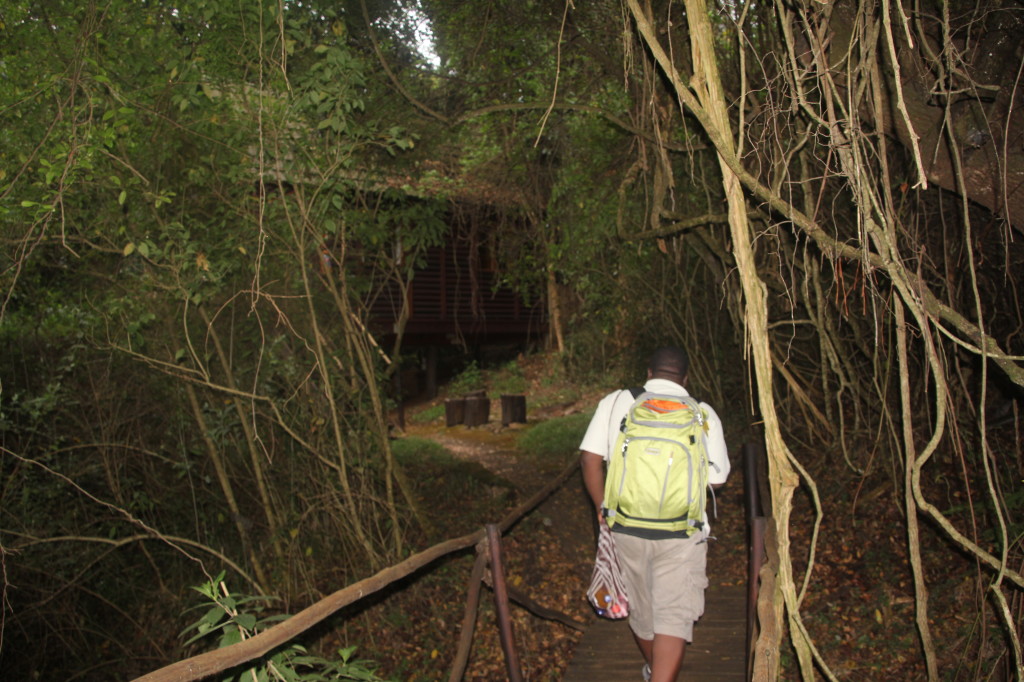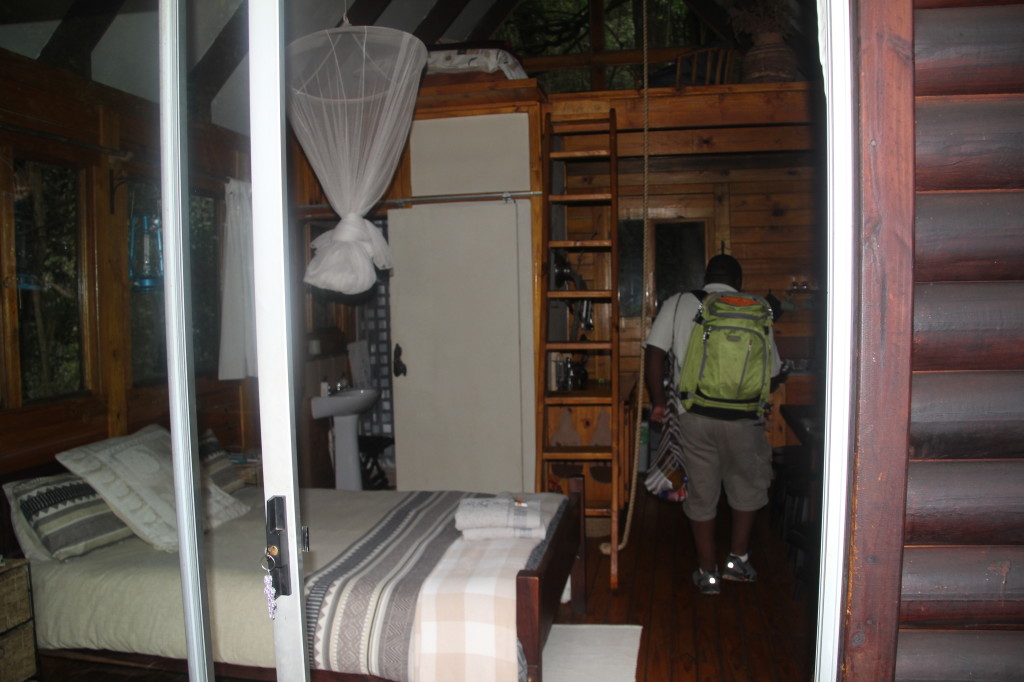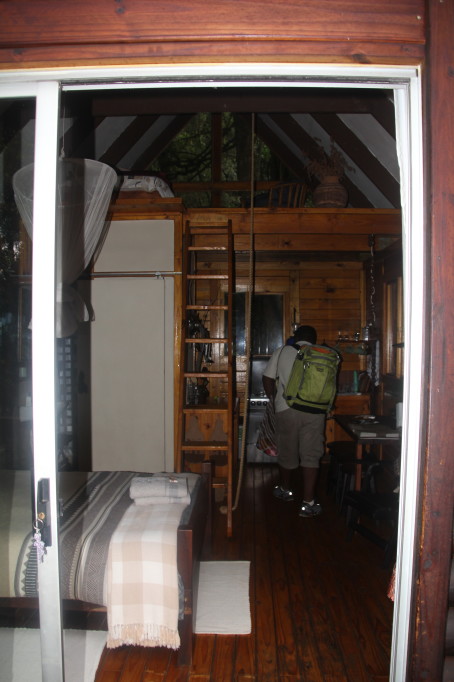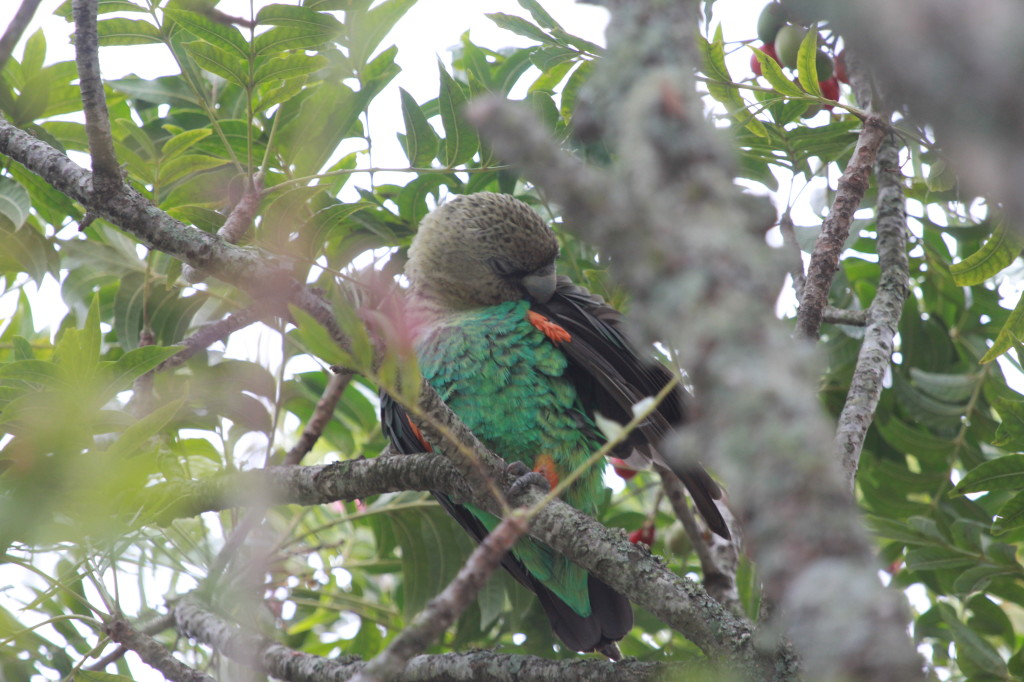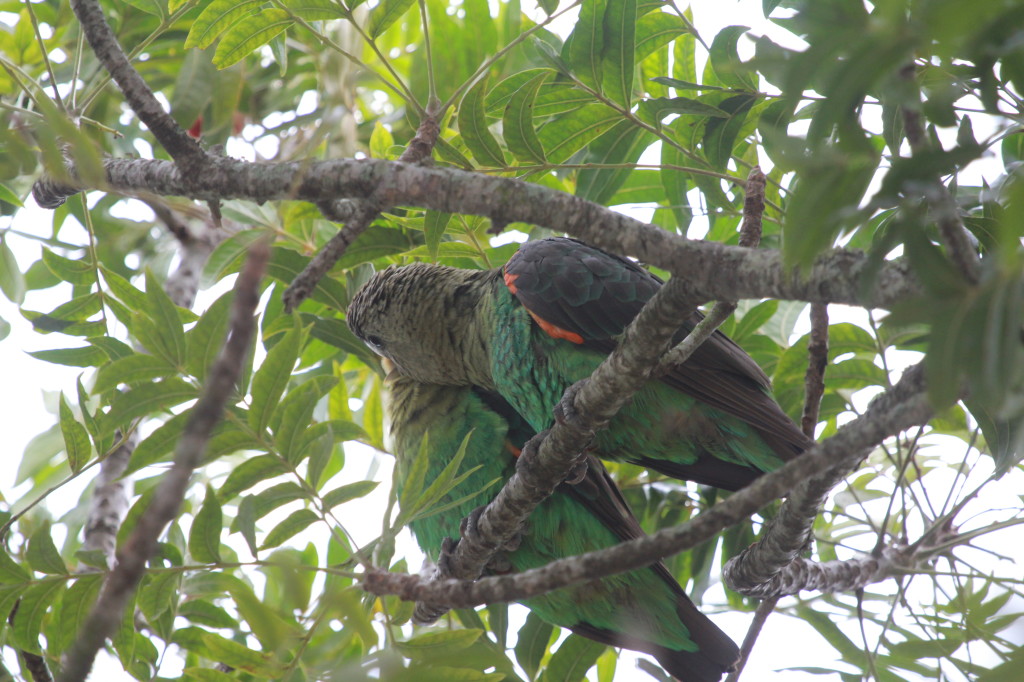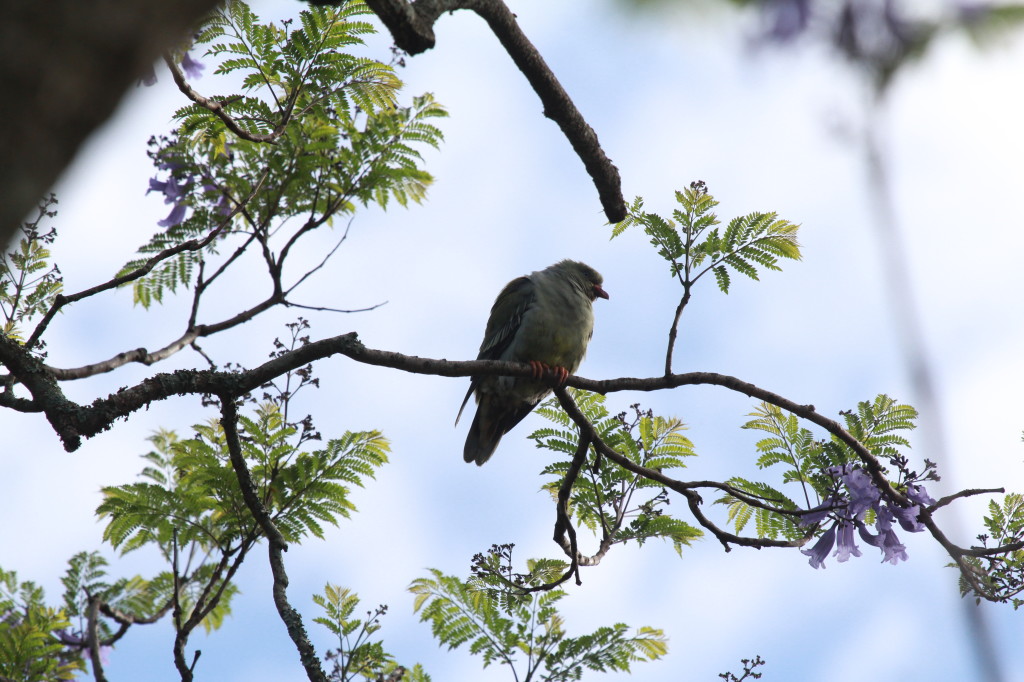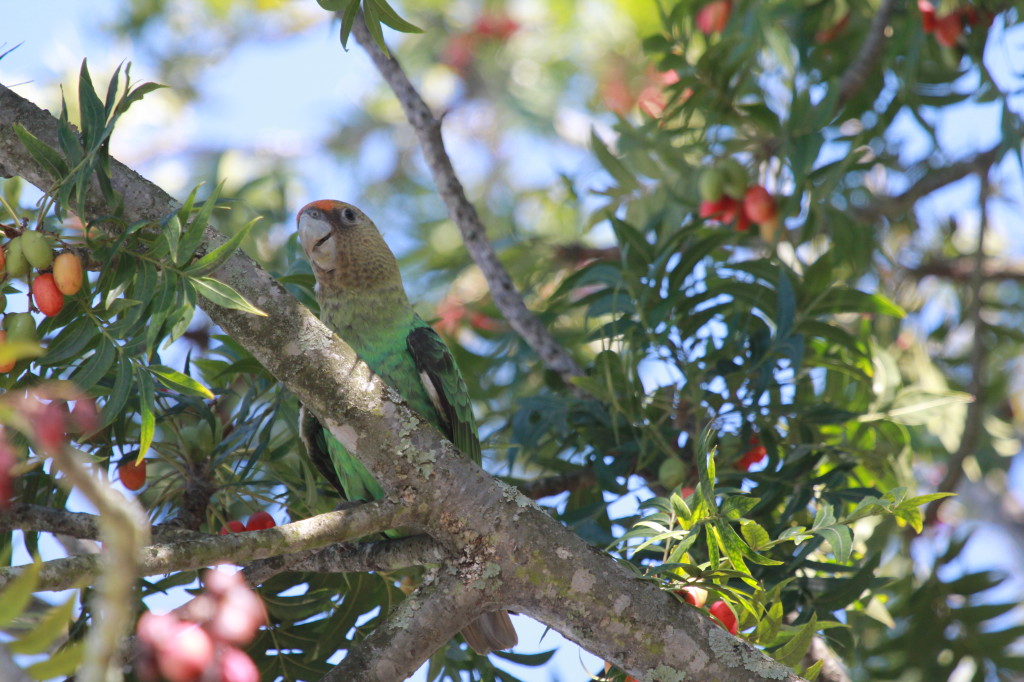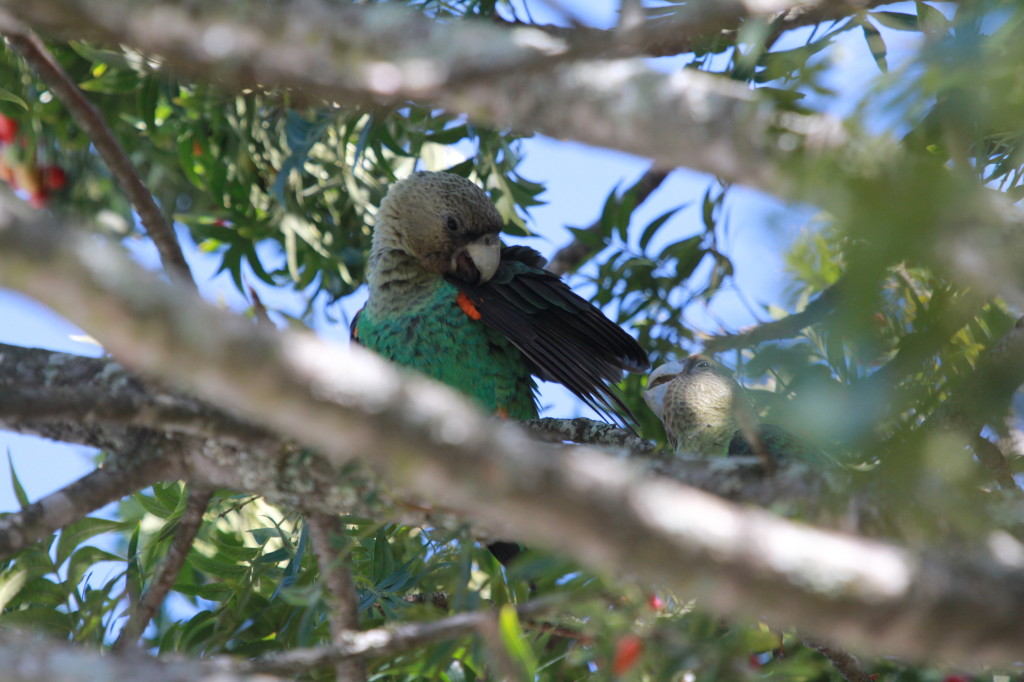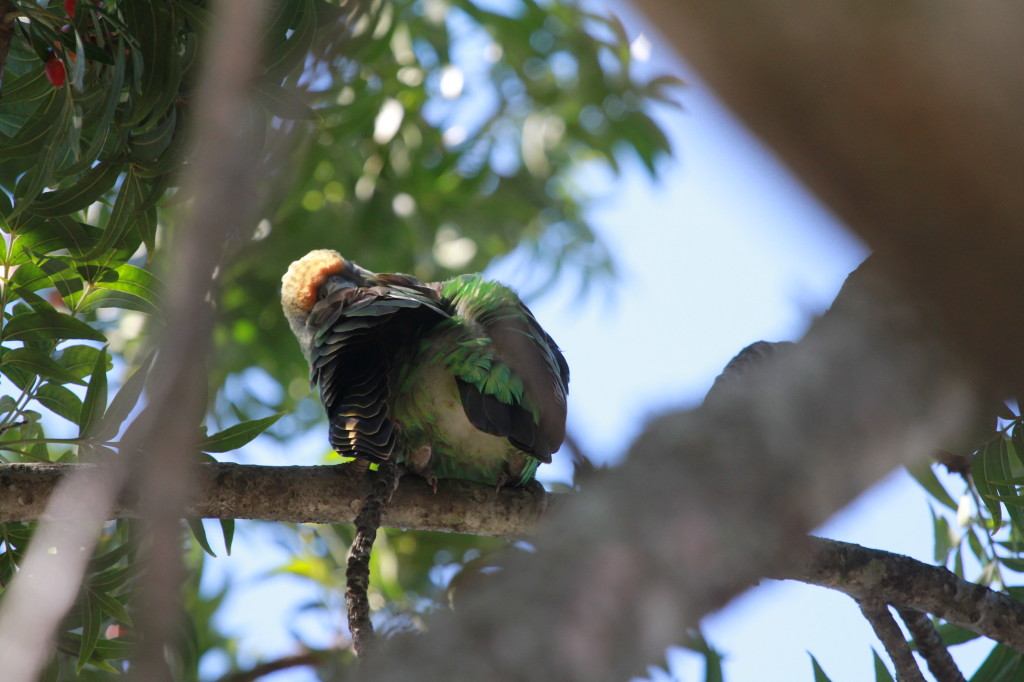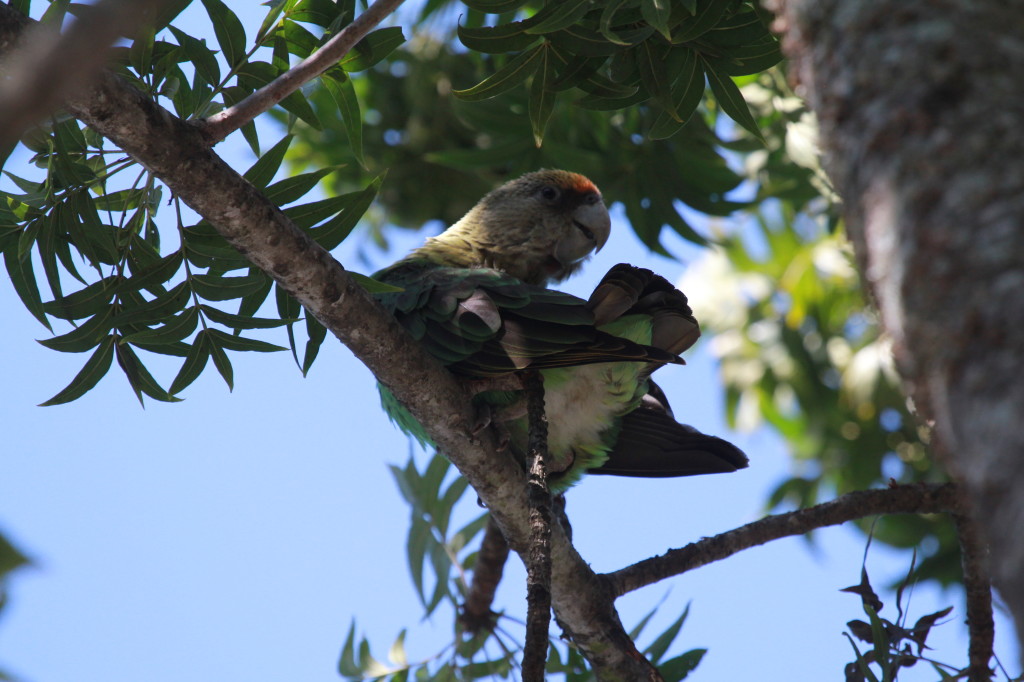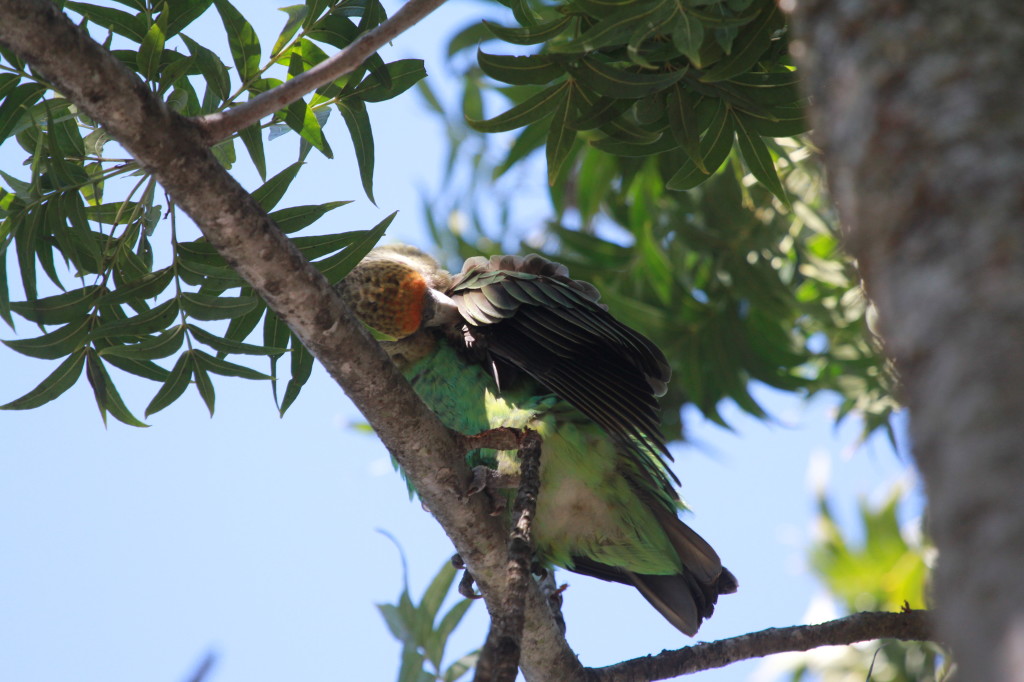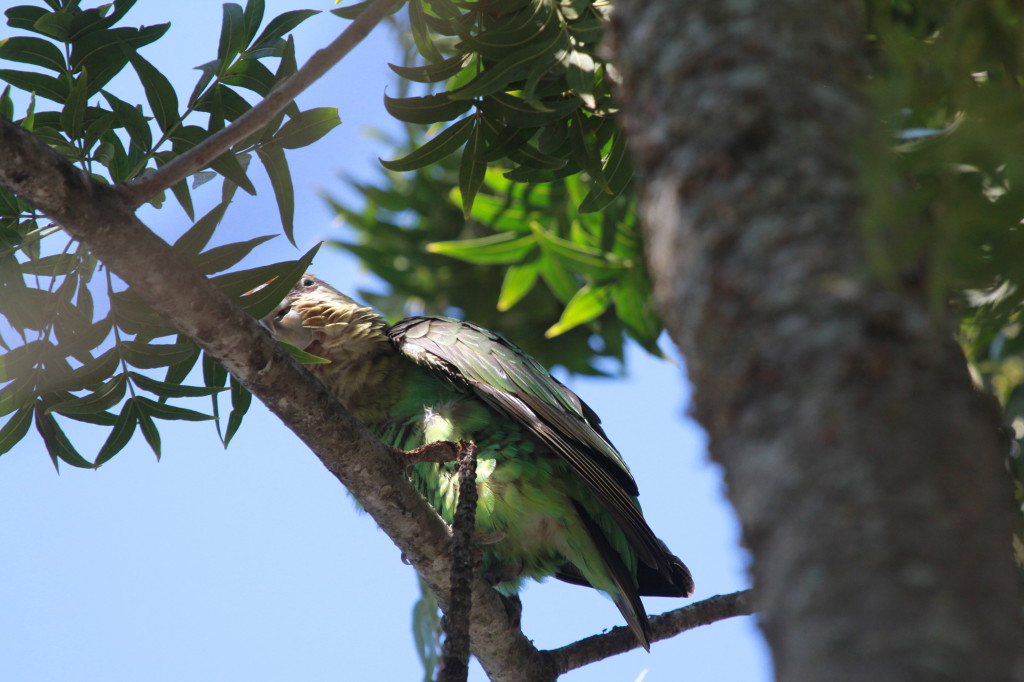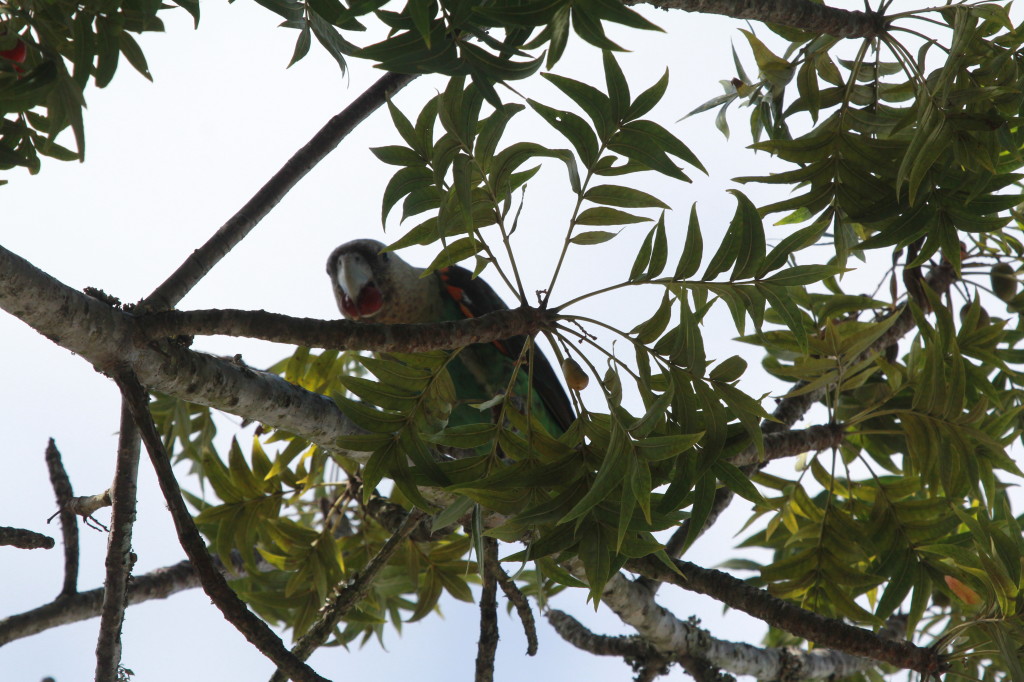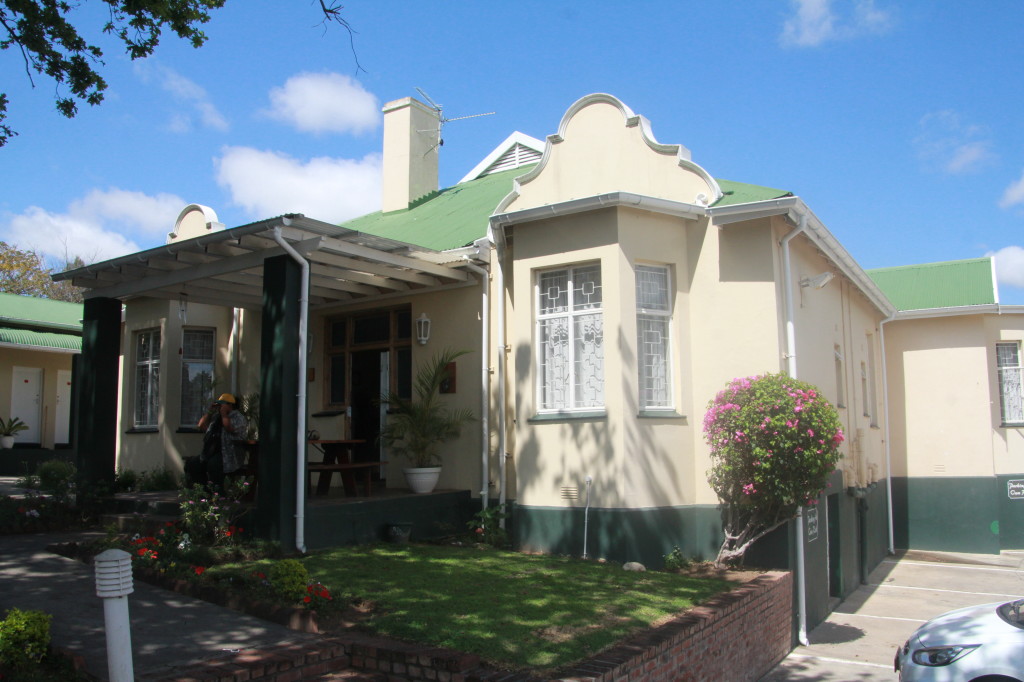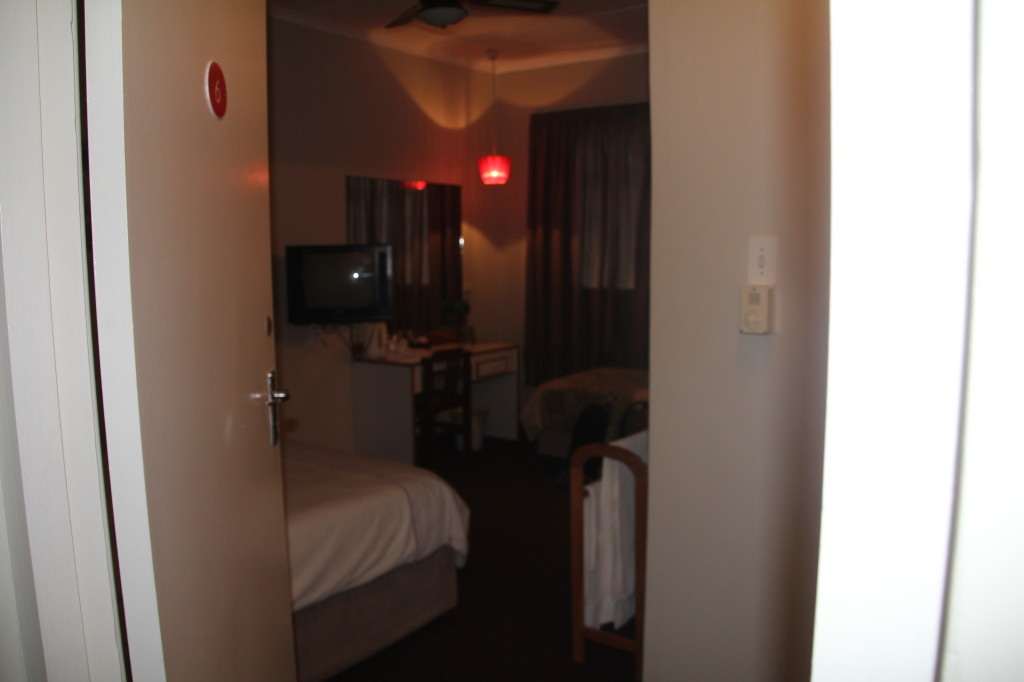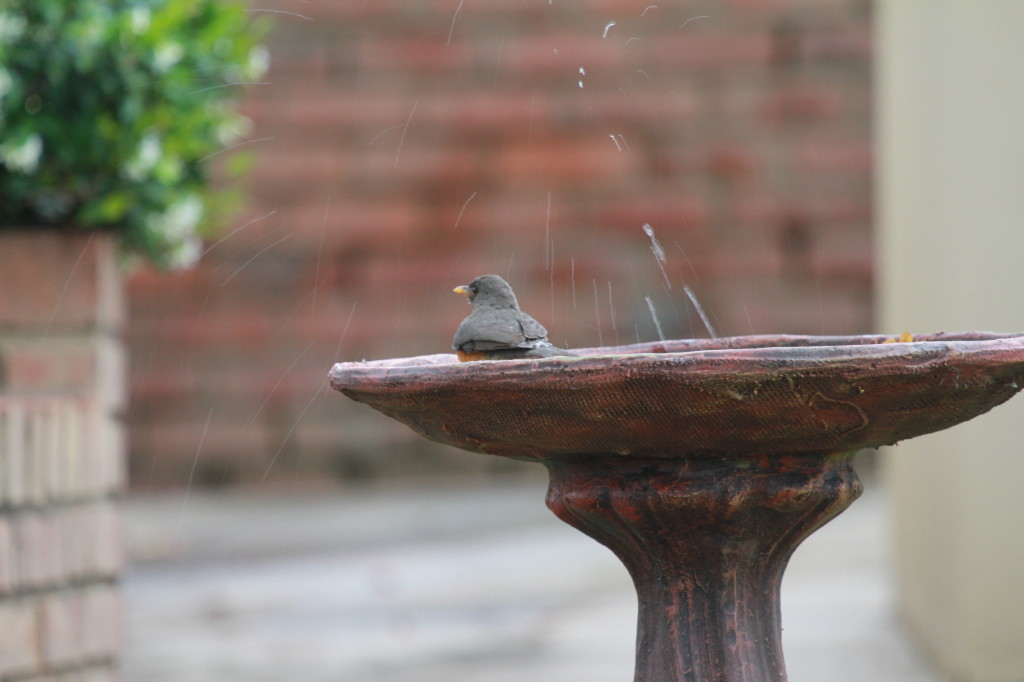I have already blogged about my encounter with the Cape Parrots in King William’s Town. This post will be about the Cape Parrots in the Woodbush Forest in Magoebaskloof.
I should mention that there is another similar species found in savannahs further north called Grey-headed Parrots (Poicephalus fuscicollis suahelicus). They were once a subspecies of Poicephalus robustus but have now been separated out into their own species. If you look at maps in field guides, it can be very confusing as they aren’t very detailed as to which species is near which town. Scientific taxonomy is not my field of expertise so I’ll refer you to Dr Steve Boyes’ explanation on Safari Talk. There are also a number of researchers and biologists in the Cape Parrot Group on Facebook who can help if anyone needs more information.
After a good night’s sleep at Kurisa Moya, David Letsoalo picked us up in his jeep. There was no way our little car would be up for the bumpy roads in the Woodbush Forest so we paid extra to hire David’s jeep.
I knew it would be interesting to see the birds at a different time of year as the last time it was so foggy, we could barely see the Cape Parrots. We were lucky this time and the weather was clear.
This time we didn’t have to hunt around for the parrots. It was breeding season and David knew exactly where a Cape Parrot family could be found. He said there were 2 chicks but we only saw one at a time so I can’t say for sure we saw them both, it could have been the same one poking his head out. He wasn’t fledging age, he was actually a few weeks younger than the King William’s Town youngster. We were there on 4 Nov 2014 and I was glad I had brought the trip forward. If we had gone as planned in Sept 2015, the babies would still be in eggs, not nearly as cute as seeing youngsters!
See the little head poking out!
At this point the parents flew off to get more food leaving the chicks in the nest. They were gone around 45 minutes so we looked for other birds while waiting for them to return (will blog this part tomorrow). When the parents returned, the chicks heard them right away and at least one poked his head out in anticipation. One perched as a sentinel while the other went down to the baby.
The parent feeding the chicks in the nest.
I only managed one flight shot.
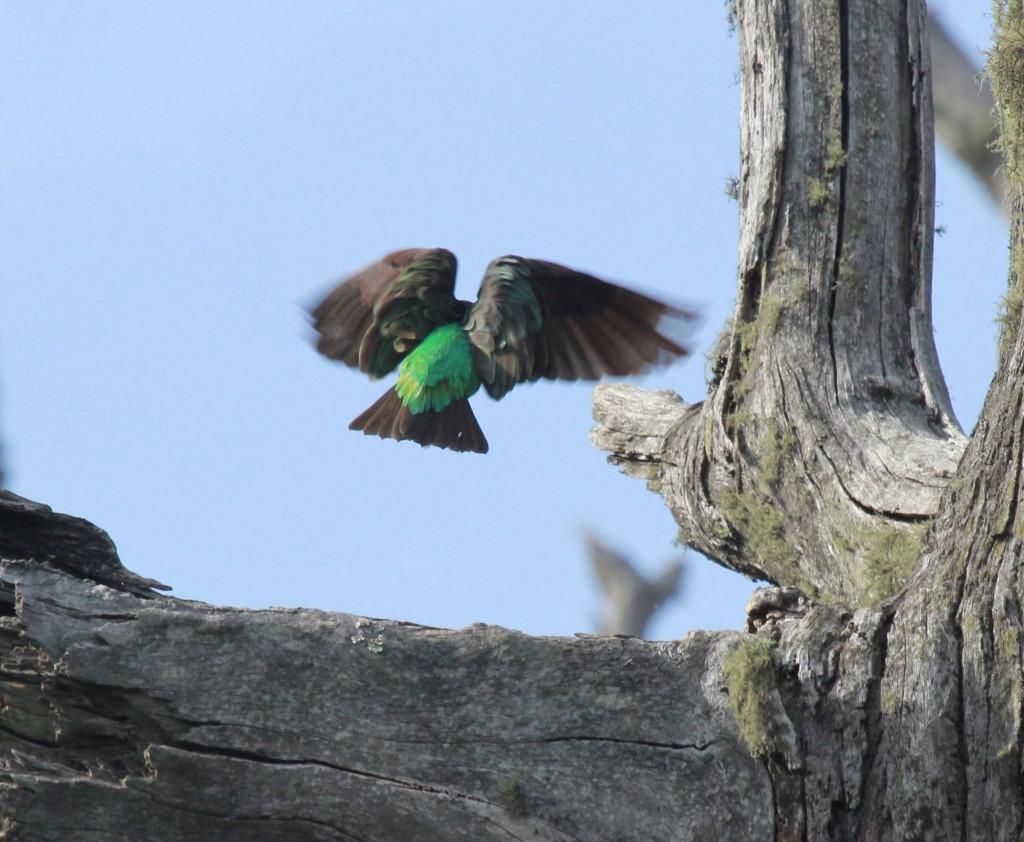 Now it was getting later and David said the parents might not be back for awhile so we left the area to look for other birds. I’ll post those pics tomorrow.
Now it was getting later and David said the parents might not be back for awhile so we left the area to look for other birds. I’ll post those pics tomorrow.







